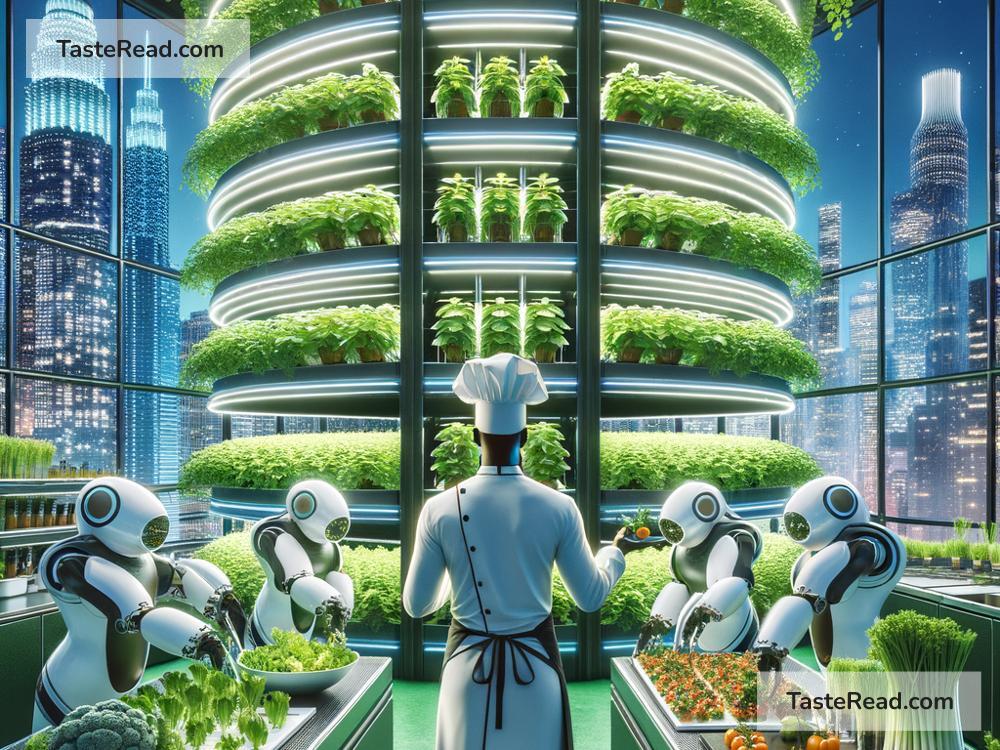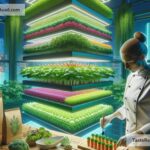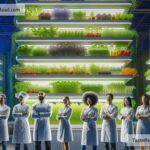The Future of Food: A Journey Towards Transformative Sustainability
Food is an essential part of our lives. It connects us, keeps us healthy, and powers our daily activities. But as the world grows and changes, the way we produce, consume, and waste food needs a major transformation. Climate change, population growth, and resource scarcity are pressing challenges that demand smart solutions to ensure that we can feed the world sustainably in the future. So, how will the future of food look? What changes are happening to make food production more sustainable? Let’s take a closer look at this exciting journey toward transformative sustainability.
What Does “Transformative Sustainability” Mean?
To put it simply, transformative sustainability means rethinking and reshaping our food systems to protect the planet while meeting everyone’s needs. It goes beyond making small changes here and there. Instead, it focuses on reimagining the entire process — from farming and distribution to consumption and waste. The goal is to create systems that not only work for people today but also ensure future generations can thrive.
Growing Food in Smarter Ways
Traditional farming methods, while effective in the past, are struggling under the weight of modern demands. Farming relies heavily on water, land, and chemicals, which can harm the environment and lead to problems such as soil degradation, deforestation, and greenhouse gas emissions.
The future of food includes innovative farming techniques that provide solutions to these issues. Here are some exciting examples:
-
Vertical Farming: Instead of growing food horizontally across large fields, vertical farming uses tall structures indoors to grow crops in stacked layers. This method uses less land, water, and pesticides while producing fresh, healthy food close to urban centers. It allows us to grow year-round without depending on weather.
-
Regenerative Agriculture: Unlike conventional methods, regenerative farming prioritizes soil health. By planting cover crops, rotating crops, and using natural fertilizers, farmers can restore nutrients to the soil. Healthy soil captures carbon from the atmosphere, helping fight climate change.
-
Precision Farming: Farmers today have access to technology like drones, sensors, and artificial intelligence. These tools help them monitor crops and farm resources more efficiently. By applying water and nutrients precisely where needed, precision farming reduces waste and maximizes growth.
Innovating What We Eat
In the future, what we think of as food could change dramatically. Scientists, startups, and food innovators are creating alternatives that are better for the planet:
-
Plant-Based Proteins: Foods made from plants are becoming increasingly popular as substitutes for meat and dairy. For example, companies are creating burgers, milk, and even cheese from ingredients like soy, peas, and oats. Plant-based diets use fewer resources and produce fewer emissions compared to raising livestock.
-
Lab-Grown Meat: Imagine eating meat without needing to harm animals or raise them on farms. In laboratories, scientists are creating “cultured meat” by growing animal cells. This revolutionary approach may soon provide cruelty-free options that require fewer resources and have less environmental impact.
-
Edible Insects: While it might sound unusual to some, eating insects is common in many cultures and may become a global trend. Insects like crickets and mealworms are high in protein and require minimal land, water, and feed to grow. They could offer a sustainable solution for addressing food shortages.
-
Functional Foods: Future foods might also be designed to offer health benefits beyond basic nutrition. Functional foods could include fortified snacks or drinks that boost immunity, improve digestion, or combat diseases.
Reducing Food Waste
Food waste is a major global problem. About one-third of all food produced is wasted, which is not only a waste of money but also a waste of precious resources like water, energy, and labor. Experts are finding new ways to tackle this issue:
-
Smart Packaging: Packaging embedded with technology could alert consumers when food is about to spoil, reducing unnecessary waste.
-
Upcycling: Food scraps or items that might typically be thrown away (like fruit peels or misshapen vegetables) can be turned into nutrient-rich products. For instance, companies are using leftover bread to make beer or transforming fruit pulp into healthy snacks.
-
Community Sharing Platforms: Apps and local programs allow people to donate unused food to those who need it. These efforts fight hunger and cut down on waste.
Supporting Local and Sustainable Systems
The future of food isn’t just about technology; it’s also about making better choices as consumers. Buying locally grown food supports small farmers and reduces the carbon footprint of transportation. Eating seasonal produce ensures resources are used more efficiently. Embracing cultural diversity in food can also introduce us to creative, sustainable ingredients and cooking practices.
The Big Picture: Working Together for a Better Future
The path to sustainable food systems requires cooperation from governments, businesses, scientists, farmers, and individuals like you and me. Small choices, such as adopting a more plant-based diet or reducing food waste at home, can make a big difference.
With the global population expected to reach nearly 10 billion by 2050, the time to act is now. By combining tradition and innovation, science and community values, we can transform how food is grown, shared, and enjoyed. Together, we can create a future where everyone has access to healthy, affordable food — without harming our planet.
The future of food is full of promise. It’s not just about filling our plates; it’s about creating a sustainable world. Whether through smarter farming, innovative foods, or reducing waste, transformative sustainability is the key to a brighter tomorrow. Let’s work toward it together!


